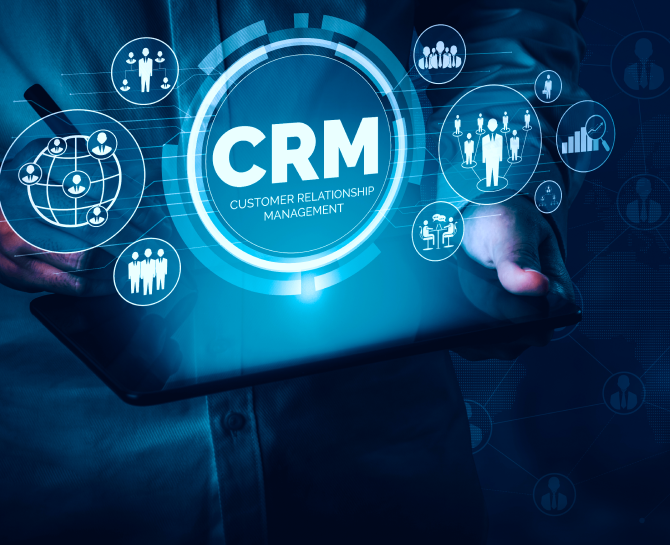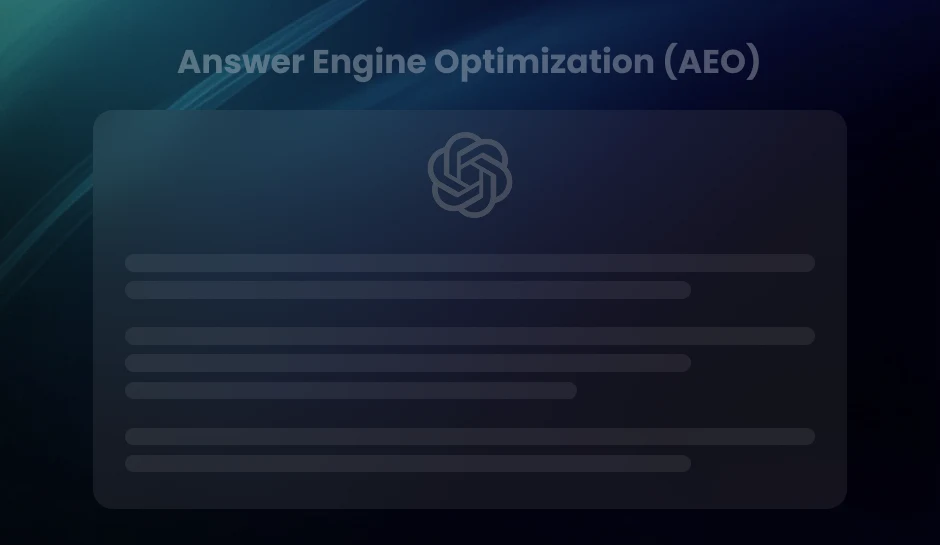
CRM Data Enrichment: Unlock Precision, Personalization, and Performance
CRM data enrichment goes beyond basic contact info, it fills gaps, updates outdated records, and layers in third-party intelligence to create a complete customer view. The result? Precision targeting, smarter personalization, and high-performing CRM systems that turn data into real business impact.
Customer Relationship Management (CRM) data forms the foundation of sales pipelines, marketing campaigns, and service interactions. It consists of contact details, behavioral records, transaction histories, and engagement patterns, touchpoints contributing to a company’s understanding of who the customer is and what they need.
CRM data enrichment is the process of enhancing raw CRM data with additional, relevant, and up-to-date information from internal or third-party sources. This enrichment transforms sparse entries into insight-rich customer profiles, enabling smarter segmentation, deeper personalization, and significantly improved conversion rates. Businesses that integrate comprehensive enrichment strategies report notable gains in data accuracy, campaign relevance, and overall ROI.
This post will break down the mechanics of CRM data enrichment, explore the leading provider tools, examine key use cases across departments, and outline the measurable benefits it brings to high-performance teams. Every section delivers actionable insight designed for decision-makers ready to scale smarter.
What Is CRM Data Enrichment?
The Core Function of Enrichment
CRM data enrichment enhances the quality, depth, and utility of customer relationship management databases. The process involves systematically adding external data to existing contact or account records. This goes beyond basic form fills; enrichment brings in verified and contextual information that transforms incomplete or static profiles into action-ready records.
Expanding and Upgrading Customer Records
Raw CRM entries often come with gaps. Enrichment fills in missing customer details, including:
- Job title: Identifies decision-makers versus influencers across an account.
- Company size and industry: These factors provide context for tailoring value propositions.
- Geographic location: Enables regional targeting and time zone alignment.
- Email validation: Confirms deliverability and reduces bounce rates.
Beyond gaps, enrichment actively replaces outdated or inaccurate data. When a lead changes roles, locations, or domains, modern enrichment tools detect the shift and update the CRM accordingly.
Enhancements also come from layering on third-party intelligence. This includes firmographic data, technographic insights, social profiles, recent funding rounds, and intent signals. All of these create a multidimensional view of each lead or account.
Data Enrichment vs. Data Cleansing
Although often used interchangeably, enrichment and cleansing serve different purposes. Cleansing corrects and removes invalid, duplicate, or irrelevant entries. It ensures hygiene. Enrichment, on the other hand, bolsters the data’s depth and context. While cleansing might delete a bouncing email, enrichment would go further and identify a valid replacement address and current job title.
Application Across B2B and B2C CRM Systems
The benefits of enrichment span both B2B and B2C ecosystems, though the execution differs. In B2B, enriching CRM data provides insight into account hierarchies, department structures, and executive-level contacts. In B2C, enrichment tools highlight behavioral patterns, purchase history, income brackets, and demographics.
In both cases, the enriched profiles fuel precise targeting, stronger segmentation, and smarter engagement strategies. Instead of broad-brush campaigns, marketers and sales teams can now tailor messages to actual roles, needs, and readiness signals embedded in the data.
Pro Tip- Automate enrichment at key CRM touchpoints, such as lead capture, form submission, and after email bounce events. This ensures your database stays fresh in real time, enabling faster outreach with greater personalization and fewer manual updates.
Why Data Accuracy Drives CRM Performance
How Poor Data Quality Undermines CRM Systems
Every decision in a customer relationship management (CRM) system relies on the data feeding it. If that data is flawed, missing, outdated, or inconsistent, then CRM-driven decisions miss their mark. Incomplete records break workflows, silence lead nurturing sequences, and force teams to guess at customer preferences.
- Incomplete contact details result in missed calls, undeliverable emails, and ineffective marketing outreach. Without valid phone numbers or current job titles, reps waste hours chasing dead ends.
- Mismatched or duplicated data fractures the customer view across sales, support, and marketing. A lead may appear under various records, each offering fragments of the truth, none of them actionable.
Once data loses its precision, segmentation becomes unreliable. Campaigns target irrelevant audiences. Personalization attempts can backfire, resulting in incorrect names, outdated industries, and irrelevant messaging. Conversion rates dip because the basics don’t match.
The Lift from Enriching CRM Data
Data enrichment fills in the blanks, smooths out inconsistencies, and transforms a noisy dataset into a fine-tuned customer intelligence system. By layering verified and dynamic third-party data over your first-party records, enrichment corrects inaccuracies at scale and adds context that actionably improves CRM outcomes.
Validated data enables automation to run smoothly. Sales teams can access firmographic insights, including company size, industry classification, and technology stack, without conducting manual research. Marketing builds high-performing segments with real-time titles, locations, and digital behavior signals. Support escalations resolve faster when all user context is visible at a glance.
Bad Data Costs Real Revenue
Reliable figures illustrate just how damaging bad data can be:
Forty-four percent of companies say that incomplete or inaccurate data has negatively impacted their lead-generation efforts (Source: Experian).
- 27% of sales reps say their data is so poor that more than one-quarter of their outreach efforts are wasted (Source: Dun & Bradstreet).
- The average annual cost of poor data quality for organizations globally is $12.9 million (Source: Gartner).
High-quality CRM data doesn’t just reduce errors; it sharpens execution across revenue teams. Enrichment delivers the accurate, contextualized information that fuels confident sales, effective marketing, and responsive service.
Pro Tip- Schedule regular data quality audits, even if enrichment is automated. Pair enrichment tools with data validation rules inside your CRM to catch anomalies early and maintain a trustworthy, revenue-driving system.
Maximizing CRM Value with Third-Party Data Providers
What Are Third-Party Data Providers?
Third-party data providers aggregate, synthesize, and deliver data sets collected across multiple external sources. Unlike first-party data that comes directly from customer interactions within your channels, third-party data expands your visibility by adding external insights, often at a scale that’s not feasible to build in-house.
These vendors mine public records, crawl websites, analyze social media, purchase vetted datasets, and utilize AI-driven models to enrich CRM records with detailed insights. This enables teams to add missing fields, validate existing information, and append contextual attributes to leads, contacts, and accounts.
Key Data Types Offered by Vendors
- Firmographics: Company-level attributes such as revenue, employee count, headquarters location, industry classification (e.g., NAICS, SIC), and growth indicators.
- Technographics: Data on the technologies a company currently uses, CRM platforms, marketing automation, cloud providers, cybersecurity tools, and more.
- Social Signals: Real-time digital behavior markers such as hiring surges, leadership changes, product launches, media mentions, or intent signals based on social or content engagement patterns.
Benefits and Shortcomings of Using External Data
Plugging third-party data into CRM systems unlocks immediate advantages. By bolstering incomplete records and adding context that sales and marketing teams can’t gather manually, enriched data enables higher personalization and sharper segmentation. Lead scoring becomes more precise, targeting becomes more strategic, and outreach becomes more relevant.
However, no provider delivers perfect coverage or accuracy. Some vendors may rely heavily on scraped data with limited validation, while others may not source updates frequently enough to keep pace with fast-changing industries. Integration constraints can also throttle real-time access, especially when APIs are gated, or data formats clash with existing infrastructure.
Lead Enrichment: Fueling Better Sales Engagement
How Enriched Leads Help Sales Teams
When sales reps engage with enriched leads, they operate with a sharper lens. Instead of relying on generic contact data or incomplete profiles, they dive into conversations backed by context, job roles, company size, technology stack, buying intent signals, recent funding, and more. This context transforms vague outreach into targeted and timely communication.
More relevant and timely outreach: Enrichment enables dynamic messaging. If a prospect has recently adopted a new platform or announced a market expansion, messaging can reflect that event in real-time, thereby increasing the probability of engagement.
Better scoring, prioritization, and segmentation: CRM systems equipped with enriched data allow lead scoring models to consider real-time firmographic, technographic, and behavioral attributes. Sales teams can segment prospects by readiness, industry, or budget and allocate their efforts accordingly.
Tools and Techniques for Automating Lead Enrichment Within CRM
Native integrations: Leading CRMs, including Salesforce, HubSpot, and Zoho, support native integrations with enrichment tools such as Clearbit, ZoomInfo, and LeadIQ. These platforms append real-time data directly into CRM entries as leads arrive.
APIs and Webhooks: For tech-stacked environments, custom APIs connect CRMs to enrichment engines. When a new lead is captured, the system pings external data sources and updates the record instantly.
Marketing automation workflows: Tools like Marketo and Pardot trigger enrichment tasks before pushing the lead to sales. This ensures no rep receives an underdeveloped contact.
Automation removes the bottleneck of manual research. Within seconds, a lead is transformed from a contact form submission into a well-rounded, actionable profile within the CRM. This velocity powers faster engagement and higher sales productivity.
Pro Tip-Enable lead enrichment at the point of capture, not after. Integrating enrichment tools directly into your lead forms or automation workflows ensures that every lead handed to sales is already qualified, contextualized, and ready for immediate, personalized outreach.
Driving Sales Enablement With Enriched CRM Data
Aligning Sales and Marketing Through Consistent Data
Misaligned sales and marketing teams waste both time and budget. When CRM data is enriched across the board, filling gaps, correcting inaccuracies, and standardizing fields, both functions begin operating from a single source of truth. Messaging aligns. Targeting narrows. Lead scoring becomes reliable. With shared visibility into enriched prospect records, handoffs from marketing to sales become smoother and more timely.
For example, when marketing enriches lead data with firmographics, sales can instantly evaluate account potential rather than spending time on discovery. Sales avoid chasing unqualified leads; marketing optimizes nurture paths based on sales feedback looped back into the CRM.
Feeding Sales Enablement Platforms With High-Value Data
Modern sales enablement platforms rely on enriched CRM data to deliver predictive insights and hyper-personalized content. Without enriched data, these systems underperform. Once enrichment is integrated, platforms like Highspot, Seismic, and Showpad can surface the most relevant content at each deal stage based on a prospect’s size, region, intent behavior, and technology stack.
Pipeline forecasting becomes more precise. Conversation intelligence tools interpret dialogue in context. Reps receive training modules tailored to specific industries or use cases derived from firmographic enrichment.
How Data Accuracy Directly Affects Sales Productivity
B2B sales reps lose approximately 546 hours annually due to bad CRM data, according to data from Experian. That time gets spent on manual research, dead-end outreach, and process inefficiencies. Enrichment corrects inaccuracies and fills in incomplete records, freeing up valuable time for selling activities.
Accurate data also improves connection rates for outreach. With the correct phone numbers, titles, and LinkedIn URLs already added to CRM records, reps spend less time hunting and more time engaging. Outreach becomes more personalized, which accelerates conversions. As rep efficiency improves, so does quota attainment, which in turn impacts both revenue and morale.
Scaling Segmentation and Personalization with Enriched CRM Data
Dynamic Segmentation Powered by Enhanced Attributes
Enriched CRM data transforms stagnant lists into fluid audience segments. Marketers no longer depend solely on names and email addresses. By layering geographic details, firmographic insights, and behavioral signals, segmentation gains both nuance and depth.
- Geographic data, such as city, time zone, or local climate, enables location-based campaigns that are timed and tailored to the regional context.
- Firmographic data, such as company size, industry, and annual revenue, supports B2B segmentation that aligns with sales readiness and the buyer’s journey stage.
- Behavioral data, including website visits, feature usage, or content downloads, tracks intent and engagement over time.
This triad of enriched data types unlocks highly specific audience filters. For example, targeting mid-market marketing managers in software companies who downloaded a pricing page in the last 7 days becomes not only possible but routine.
Campaign Personalization at Speed and Scale
Granular contact data feeds precision targeting. Campaigns stop being generic and start feeling personally written. Sales and marketing teams can tailor messages to job titles, past behavior, and industry-specific pain points.
Fully enriched profiles also plug directly into personalization tokens far beyond the first name. Dynamic content blocks enable platforms to insert personalized storylines, use cases, or testimonials tailored to a specific vertical or buyer stage. Pairing these with enriched firmographic signals drives higher open rates, longer dwell times, and better conversion metrics.
Personalization Beyond the Inbox
Email isn’t the only surface where enriched data multiplies impact. Integrated enrichment supports personalization across:
- Chatbots that greet users by domain name or suggest content by industry
- Website content that switches headlines or customer logos based on visitor firmographic tags
- Sales cadences that reference relevant competitor switches, recent funding, or regional news
Each channel reflects a single source of truth: the enriched CRM. This centralized intelligence enables messaging to flow seamlessly across various surfaces without losing continuity or tone.
Automation Without Sacrificing Relevance
Scaling personalization around enriched data doesn’t mean sacrificing authenticity. When well-built, automation frameworks pull unique insights from enriched records and then inject them into messages that feel handcrafted.
The result? A cold prospect reads a sales email, and it resonates with them. Because it references the very pain point they Googled yesterday. Or mentions their exact role. Or links to a success story in their niche. Underneath, there’s automation logic. On the surface, there’s emotional logic. The same source powers both: high-fidelity enriched contact data.
Pro Tip – Pair enriched CRM data with conditional logic in your marketing platforms to create “if-this-then-that” personalization at scale. For example, if a contact is in fintech and based in London, dynamically serve case studies or messages specific to that industry and region, automatically
Supercharging Account-Based Marketing with Enriched CRM Data
Enrichment as a Foundation for ABM Success
Account-based marketing lives and dies by precision. Without enriched CRM data, segmentation collapses into guesswork, and outreach suffers from vague targeting. Enrichment injects relevancy into ABM initiatives. It provides firmographic, technographic, and behavioral insights, allowing teams to determine not just who qualifies as a high-value account but also when and why.
This shift transforms ABM from a static model into a dynamic, intent-driven discipline. Every tailored campaign is informed by data points extracted directly from enriched CRM profiles, industry classification, company size, recent hiring patterns, funding activity, and technology stack composition, among other factors.
Supercharging Account-Based Marketing with Enriched CRM Data
Enrichment as a Foundation for ABM Success
Account-based marketing lives and dies by precision. Without enriched CRM data, segmentation collapses into guesswork, and outreach suffers from vague targeting. Enrichment injects relevancy into ABM initiatives. It provides firmographic, technographic, and behavioral insights, allowing teams to determine not just who qualifies as a high-value account but also when and why.
This shift transforms ABM from a static model into a dynamic, intent-driven discipline. Every tailored campaign is informed by data points extracted directly from enriched CRM profiles, industry classification, company size, recent hiring patterns, funding activity, and technology stack composition, among other factors.
Identifying Buying Committees and Stakeholders with Enriched Data
Targeting one contact per account no longer works. B2B purchases often involve 6 to 10 decision-makers, according to Gartner research. Enriched CRM data uncovers those people. By integrating datasets from LinkedIn, ZoomInfo, or Clearbit, CRMs display multi-threaded contact hierarchies: influencers, budget holders, legal gatekeepers, and executive sponsors.
Some platforms layer in org charts, department affiliations, recent promotions, or job transitions within the account. This visibility enables sales and marketing to build stakeholder maps and craft multi-person outreach sequences aligned with individual motivations and power levels inside the company.
Aligning Sales and Marketing in ABM with Unified Data Profiles
Misalignment between sales and marketing originates from incompatible data sets. Enriched CRM data establishes a shared source of truth. When both teams view the same real-time job titles, intent scores, purchasing triggers, and account statuses, messaging aligns, and deal stages become clearer.
Revenue teams shift from operating in silos to operating in an orchestrated manner. ABM campaigns launch with pre-qualified accounts, and sales receive data-backed playbooks instead of vague MQLs. This data harmony eliminates friction in handoffs and turns go-to-market strategies into joint ventures.
Best Practices for CRM Data Enrichment That Maximize Impact
Conduct Regular Audits and Hygiene Checks
Data decays. Contacts change roles, companies rebrand, and email addresses go dormant. On average, B2B data decays by about 30% annually, according to research from Dun & Bradstreet. To counter this, implement a consistent schedule for CRM reviews. Start with quarterly audits and monthly if your sales cycles are fast-moving or volume-intensive.
During each audit, remove duplicate entries, update outdated contact details, and purge inactive records. Enforce standard formats for fields like phone numbers, job titles, and company names. Uniformity simplifies syncing with external tools and prevents segmentation errors.
Enrich Using Both First-Party and Third-Party Data Sources
Relying solely on internal data reveals only a fragment of the customer profile. First-party data, such as lead forms, support logs, and product usage, provides context and behavioral intent. But third-party data fills in the details your leads never submitted.
Combine firmographic data from providers like Clearbit or ZoomInfo with your CRM entries. Layer in social media signals, recent funding news, and tech stack insights. This synthesis creates 360-degree profiles that sharpen targeting and scoring models.
Select Tools That Match Your Ecosystem and Use Case
Not all CRM enrichment platforms perform equally across industries or integration environments. Evaluate tools based on their:
- API compatibility with your CRM and marketing platforms
- Data freshness rate: How often their sources are updated
- Coverage scope: global, industry-specific, or SMB-focused
- Match rate: percentage of CRM contacts they can enrich
For example, if you’re a SaaS team using HubSpot, Clearbit’s native integration and tech stack data may outperform a broader provider like Dun & Bradstreet, which favors enterprise B2B profiles. Test workflows with trial credits or sandbox environments before committing.
Ensure Compliance With GDPR, CCPA, and Global Privacy Standards
Data enrichment operations must adhere to regional privacy laws. GDPR (EU) and CCPA (California) regulate consent, data use, profiling, and data storage for both vendors and end-users. Under the GDPR, using third-party data without a legal basis, such as legitimate interest or consent, violates compliance and exposes your business to fines of up to €20 million or 4% of your global annual revenue.
Choose enrichment providers that offer:
- Transparent sourcing policies
- Data subject access request (DSAR) workflows
- Clear opt-out mechanisms for contacts
Build audit trails to track the origin of each data point and the legal basis supporting its storage. Embed privacy-by-design into your enrichment strategy to avoid retroactive cleanup later.
Pro Tip –Don’t just enrich, govern. Assign data stewardship roles within your CRM team to oversee enrichment quality, manage vendor accountability, and ensure compliance stays baked into every workflow, not bolted on after.
The Next Frontier: CRM Data Enrichment Is Just Getting Started
Data that’s clean, accurate, complete, and continually updated doesn’t just improve CRM performance; it sharpens business intelligence across the board. When account insights seamlessly integrate into sales and marketing workflows, decision-makers uncover patterns more quickly, sales teams pursue stronger leads, and marketers achieve relevance at scale.
Modern CRM data enrichment has already moved beyond filling out contact fields. Machine learning platforms now predict which leads are ready to engage, while real-time analytics distinguish between an inactive prospect and a high-value account showing intent signals. These technologies are not theoretical; they’re being deployed in CRMs today to drive conversion, retention, and growth.
Enrichment platforms are also evolving toward proactive intelligence. Instead of simply updating records, they alert teams when job titles change, new buying committees emerge, or firmographics shift in response to industry events. With this layer of contextual awareness, outreach becomes precision-targeted, and outcomes improve measurably.
Key Takeaways
- CRM data enrichment fills in gaps, updates stale records, and adds contextual layers like firmographics, technographics, and intent signals. The result is a living, evolving customer profile that enables smarter decisions across sales, marketing, and support.
- With enriched CRM records, segmentation becomes more precise and campaigns more tailored. Dynamic personalization, across email, websites, and chat, drives higher engagement and conversion by matching messaging to actual buyer context.
- Enriched CRM data ensures that both sales and marketing teams operate from the same intelligence. Shared context enhances lead scoring, targeting, ABM workflows, and handoff efficiency, leading to stronger pipeline velocity and improved ROI.
- To maximize impact, choose enrichment platforms that integrate natively with your tech stack, maintain high data freshness, and comply with privacy regulations like GDPR and CCPA. Pair automation with strong data stewardship to ensure long-term value.
Are you supplementing static records with firmographic, technographic, or behavioral data?Talk to Us!
Want to see CRM enrichment in action? Get in touch with us at info@diggrowth.com and discover how enriched insights can reshape the way your teams work.
Ready to get started?
Increase your marketing ROI by 30% with custom dashboards & reports that present a clear picture of marketing effectiveness
Start Free Trial
Experience Premium Marketing Analytics At Budget-Friendly Pricing.

Learn how you can accurately measure return on marketing investment.
Additional Resources
Don’t Let AI Break Your Brand: What Every CMO Should Know
AI isn’t just another marketing tool. It’s changing...
Read full post postFrom Demos to Deployment: Why MCP Is the Foundation of Agentic AI
A quiet revolution is unfolding in AI. And...
Read full post postAnswer Engine Optimization (AEO): The New Frontier of SEO in 2025
As digital experiences continue to evolve, so does...
Read full post postFAQ's
CRM data enrichment is the process of augmenting raw customer records with supplementary information from internal or external sources. This includes firmographics, technographics, behavioral insights, and intent signals. It’s important because it transforms basic or outdated records into actionable profiles that power more accurate targeting, better segmentation, and smarter engagement across sales and marketing.
By layering in data such as job titles, industry, company size, and digital behaviors, enrichment enables the creation of hyper-personalized campaigns. Instead of generic messaging, teams can deliver content tailored to each contact’s role, interests, and business context, leading to higher open rates, better engagement, and improved conversion metrics.
Commonly enriched fields include company details (industry, size, revenue), contact information (job title, LinkedIn URL), technology stack, location, social media signals, and recent company activities like funding or hiring. These attributes help build a 360-degree customer view that informs targeting and outreach.
Popular tools include Clearbit, ZoomInfo, LeadIQ, and Lusha. These integrate with CRMs, such as Salesforce, HubSpot, and Zoho, to automatically enrich records in real-time. Many also offer APIs and webhook support for custom enrichment workflows, as well as seamless data synchronization.
To remain compliant with regulations such as GDPR and CCPA, businesses should collaborate with vendors that offer transparent data sourcing, opt-out mechanisms, and support for data subject access requests (DSARs). It’s also critical to establish internal governance, document consent processes, and regularly audit data flows to ensure privacy is respected at every stage.
 Rahul Sachdeva
Rahul Sachdeva  Arpit Srivastava
Arpit Srivastava 

